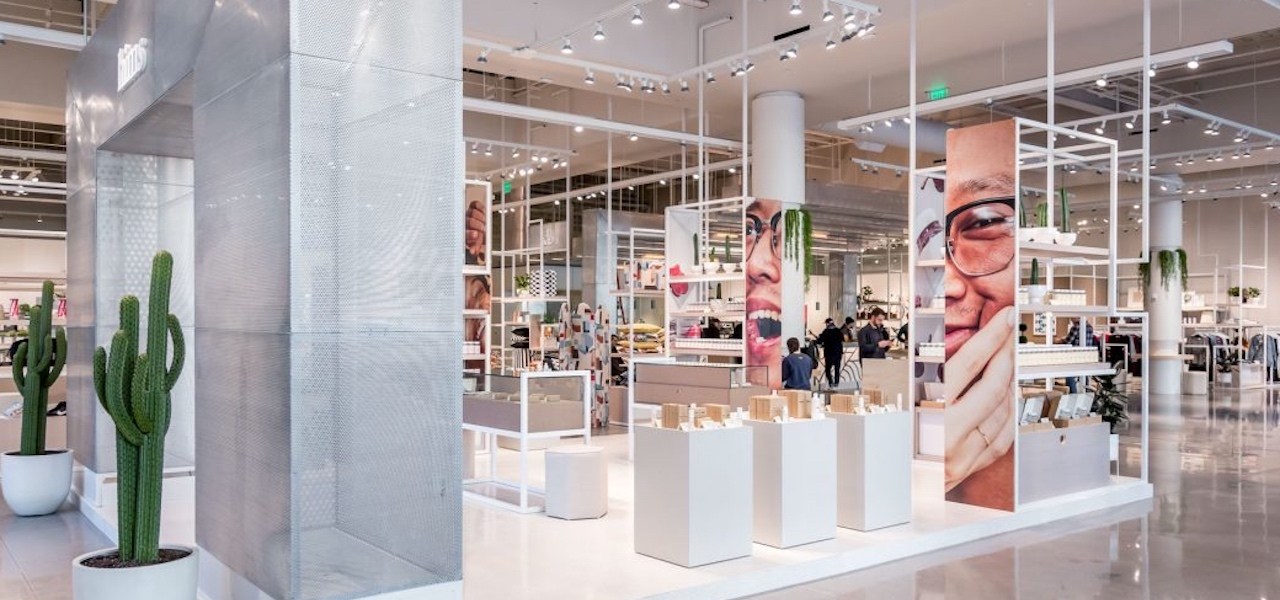Beyond shelf space: As DTC brands grow up, multi-brand retailers are shifting strategies

As a number of startups are now competing to build more modern stores for direct-to-consumer brands, they are starting to think about how they can help these brands grow beyond just giving them a space to sell their product.
Bulletin, which has three shops in New York, announced yesterday that it raised a new $7 million series round of funding. With this new round of funding, Bulletin is looking to create more solutions to help brands grow both online and offline. The company announced yesterday that it’s now built a software platform to help buyers at major retailers find the right brands to sell at their stores.
“We really wanted to build a solution that obviously got [brands] shelf space in a Bulletin store but also helped them expand their footprint beyond Bulletin’s four walls,” Bulletin chief operating officer and co-founder Ali Kriegsman said.
Other Bulletin competitors include Showfields, which has built a multi–story, experiential-driven retail space for DTC brands in Soho, and Neighborhood Goods, which describes itself as the “modern alternative to the department store.” Neighborhood Goods, which has raised $14.5 million in total, has a store in Plano, Texas, and plans to open a store in New York City later this year.
These spaces are often less expensive and offer more flexible terms than if a brand were to open a permanent physical store, or even a pop-up space on their own. They also claim to give the brand more creativity over how their product is displayed in-stores, and more data than a traditional department or wholesale retailer about who exactly is coming into the store.
“I think [multi-brand stores] are great if you are just starting out to test the retail waters before committing internal resources,” said Yashar Nejati, CEO of retail real estate platform Uppercase, in an email. “From talking to brands, the ones who do really well in a multi-brand store soon recognize they are driving all the traffic and do not necessarily need to share it with other brands in the store.”
As brands like Away and Casper have moved beyond the pop-up phase, it’s no longer a question of if a brand will open a permanent, physical retail location, but when. So, startups like Bulletin, Showfields and Neighborhood Goods have to figure out ways to still secure business from these startups as they mature. That means figuring out how to pitch them on what benefits a space that displays goods from multiple brands offers compared to a standalone store, and that their showrooms are worth the investment. Showfields for example charges brands between $6,000 and $15,000 a month.
Kriegsman said that Bulletin is interested in developing solutions to help the brands they work with “across the entire omnichannel journey.” For example, Kriegsman said that many of the brands that sell in Bulletin are struggling with the rising cost of customer acquisition on channels like Facebook and Instagram, and are trying to spend more on other advertising channels. But, “they don’t really know how to allocate their resources to optimize for ROI,” and would like to develop solutions that help brands more cost-effectively diversify their marketing mix.
“I’ve heard of brands getting burned by signing up for a showroom, paying thousands of dollars a month, and they don’t get any press,” Kriegsman said.
Ad position: web_incontent_pos1
Showfields’ value proposition, according to CEO and co-founder Tal Zvi Nathanel, is that it’s “committed to creating the best customer experience for both discovery and shopping.” At Showfields, brands have more leeway to create experiences, compared to formats like Bulletin, which primarily just give brands shelf space. For example, when Showfields opened in December, beauty startup Function of Beauty had created a “sensory experience,” that highlighted limited edition fragrances, while Gravity Products, creator of the weighted blanket, had created a relaxation space.
To that end, Showfields has built its own propriety software to help brands get set up in the Showfields ecosystem, and is constantly testing and learning to see what functionalities companies want out of a multi-brand space. For example, a few brands allow customers to make returns at their Showfields spaces, and the the store is looking at allow more brands to do that. As Showfields expands, Nathanel said that it will be looking for other ways to make it easier for brands to open physical retail spaces.
“We need to make the process of opening the store as simple as opening a website,” Nathanel said.
Matt Alexander, co-founder and CEO of Neighborhood Goods, meanwhile, said that it’s increasingly interested in bringing in brands that are interested in working with other brands, or are willing to work with Neighborhood Goods to test out a new display concept, if Neighborhood Goods has data to indicate that customers are more interested in a certain type of display.
One of the companies that displayed in Neighborhood Goods when it first opened was DTC telemedicine company Hims & Hers. After seeing the customer interest in wellness products, Neighborhood Goods worked with Hims & Hers to redesign their space into a “DTC pharmacy of sorts,” that featured multiple brands.
Ad position: web_incontent_pos2
“It’s not about saying 200 square feet, do what you want to do with it,” Alexander said. “It’s about looking at the data, looking at the consumer, looking at general behavioral traits we’re seeing and listening to what brands are looking for to deliver a really exciting experience for the consumer.”

